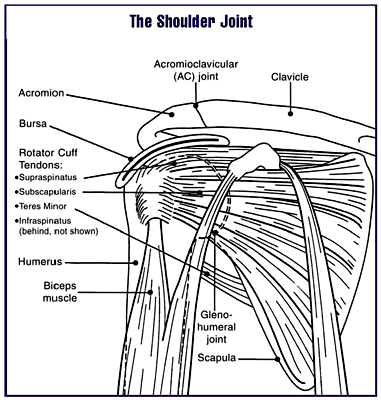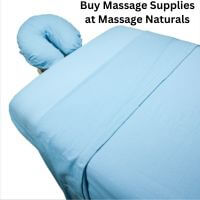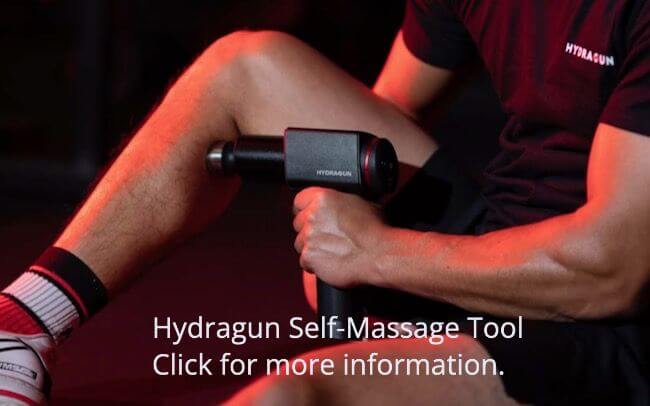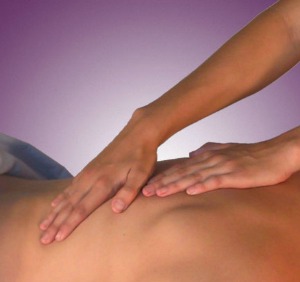As an Amazon Associate and affiliate with other programs, I may earn revenue from qualifying purchases through affiliate links. This does not affect the price you pay. Privacy Policy / Disclosures. This site is for educational purposes only.
Frozen Shoulder Pain Relief With Self Care and Massage
If you are looking for frozen shoulder pain relief, this article presents some tips from a physical therapist and also looks at massage for relieving the condition.

What Is Frozen Shoulder?
Frozen shoulder syndrome (also called adhesive capsulitis) is a painful condition that prevents you from moving your shoulder and arm through their full range of motion.
This condition occurs in the glenohumeral joint, sometimes generically called the shoulder joint, where the upper arm bone (humerus) meets the shoulder blade (scapula). Surrounding the joint is a capsule that contains fluid to lubricate the joint, ligaments to hold the joint together, and other soft tissue, including the rotator cuff tendons.
If you develop inflammation, scarring, thickening, and shrinkage of
the capsule, your shoulder can become unable to move properly.
Part of the joint capsule sticks to itself, creating pain when you
attempt to move your arm.
The cause of the condition is often unknown. Factors that increase the risk
include having other shoulder injuries, being immobile for prolonged
lengths of time, systemic disease (such as diabetes, heart disease,
Parkinson's, or a thyroid problem), and being a woman over 40.
A distinguishing feature of frozen shoulder symptoms is the capsular pattern, that is, the order in which you are unable to move:
- First, you cannot externally rotate (turn the palm forward) your arm.
- Second, you cannot lift your arm to the side.
- Third, you cannot internally rotate your arm.
Other shoulder problems have different capsular patterns. Sometimes, other shoulder problems are mistakenly labeled frozen shoulder, so an accurate diagnosis from a healthcare professional (preferably, a shoulder expert) is important.
Tips for Frozen Shoulder Pain Relief
Here are some self care tips for frozen shoulder pain relief. As always, see a healthcare practitioner for advice specific to your situation.
- During your daily activities, support the arm of the affected shoulder with a soft pillow or cushion when available. This support prevents the downward force of gravity from putting increased strain on the rotator cuff.
- Use ice sparingly to relieve pain and reduce inflammation, especially after periods of increased activity. Use heat to reduce stiffness, especially first thing in the morning—a warm shower works, as does a heating pack.
- Don't force your arm to move in painful ways, unless you must. Moving through painful ranges of motion compresses the rotator cuff because the movement causes abnormal joint mechanics. The result is often worse symptoms. However, do move your arm within pain-free limits to avoid losing more mobility.
- Don't use only one arm to lift anything, and don't do heavy overhead lifting during periods of inflammation.
- Do arm pendulum exercises (clockwise and counterclockwise circles) for 20 to 30 repetitions one or twice every day. (Start with fewer reps and work your way up, stopping if pain increases.) How to do this exercise: Bend over from your hips, supporting one hand on a solid table or other object while letting the other arm hand down. Let the hanging arm rotate gently in a circle, without forcefully moving the shoulder.
- Use a pillow under the arm at night to support the painful shoulder.
- Do daily stretching and range of motion exercises that are specifically targeted to the problem.
Frozen Shoulder Massage
Ask massage therapists about their experience dealing with frozen shoulder, as not everyone understands the condition.
Massage for this shoulder problem may start with relaxation techniques on the muscles around the shoulder. The massage therapist may then use active engagement techniques, where you contract a muscle and the therapist does a massage technique as you release the contraction.
The massage therapist may also release myofascial trigger points (irritable points that cause pain in a location other than at the point itself). Another option is slow, gentle stretching of the shoulder muscles.
You might also incorporate some essential oils for pain relief into the massage. If you do self massage, be gentle.
Dealing with this shoulder problem is often a long process—the problem can last a year or more, even with treatment. Patience and a gentle approach is likely to yield the best results.
Shoulder Exercises and Stretches
Here are some frozen shoulder exercises and stretches from a physical therapist.

Photo Credit: staras / 123RF Stock Photo







